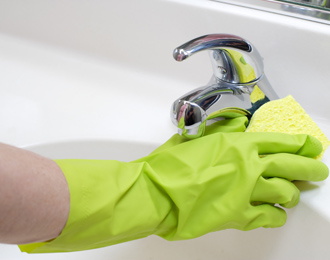How to Clean a Bedroom
 In case you are dust-sensitive, if you have allergies and/or asthma especially, you can reduce a few of your misery by developing a dust-free bedroom. Dirt may contain molds, fibers, and dander from canines, cats, along with other animals, and also tiny dirt mites. These mites, which reside in bedding, upholstered furnishings, and carpets and rugs, thrive in the summertime and die in the wintertime. They will, however, continue steadily to thrive in the wintertime if the home is comfortable and humid. The particles observed floating in a shaft of sunshine consist of dead mites and their waste material, The waste material actually provoke the allergic attack.
In case you are dust-sensitive, if you have allergies and/or asthma especially, you can reduce a few of your misery by developing a dust-free bedroom. Dirt may contain molds, fibers, and dander from canines, cats, along with other animals, and also tiny dirt mites. These mites, which reside in bedding, upholstered furnishings, and carpets and rugs, thrive in the summertime and die in the wintertime. They will, however, continue steadily to thrive in the wintertime if the home is comfortable and humid. The particles observed floating in a shaft of sunshine consist of dead mites and their waste material, The waste material actually provoke the allergic attack.The routine cleaning essential to maintain a dust-free bedroom can help reduce contact with cockroaches also, another important reason behind asthma in a few allergic people.
You almost certainly cannot control dirt conditions under that you work or spend your hours of sunlight. To a big extent, however, it is possible to eliminate dirt from your bedroom. To produce a dust-free bedroom, you need to reduce the true amount of surfaces which dust can collect.
Along with getting medical treatment for the dust allergy and/or asthma, the National Institute of Allergy and Infectious Illnesses suggests the next guidelines.
Preparation
Completely empty the area, as if you were moving just.
Empty and clear all closets and, when possible, store contents and seal closets elsewhere.
If this is simply not possible, keep clothes in zippered plastic hand bags and shoes inside boxes off the ground.
Remove carpeting, when possible.
Clear and scrub the woodwork and flooring thoroughly to eliminate all traces of dirt.
Wipe solid wood, tile, or linoleum flooring with drinking water, wax, or oil.
If you utilize linoleum, cement it to the ground.
Close the windows and doors before dust-sensitive person is preparing to occupy the room.
Maintenance
Wear a filtration system mask when cleaning.
Clean the area thoroughly and totally once a week.
Clean floors, furnishings, tops of doors, window sills and frames, etc., with a damp oil or cloth mop.
Carefully vacuum carpeting and upholstery regularly.
Use a particular filter in the vacuum cleaner.
Wash curtains frequently at 130 degrees Fahrenheit.
Air the area thoroughly.
Carpeting and Flooring
Carpeting makes dust manage difficult. Although shag carpets will be the worst kind for the dust-sensitive individual, all carpets trap dirt. Therefore, health care specialists recommend hardwood, tile, or linoleum floors. Dealing with carpets and rugs with tannic acid eliminates some dirt mite allergen. Tannic acid, however, is not as effectual as removing the carpet.
For more cleaning articles and recommendations please visit http://www.themaidsma.com/
For more cleaning articles and recommendations please visit http://www.themaidsma.com/
